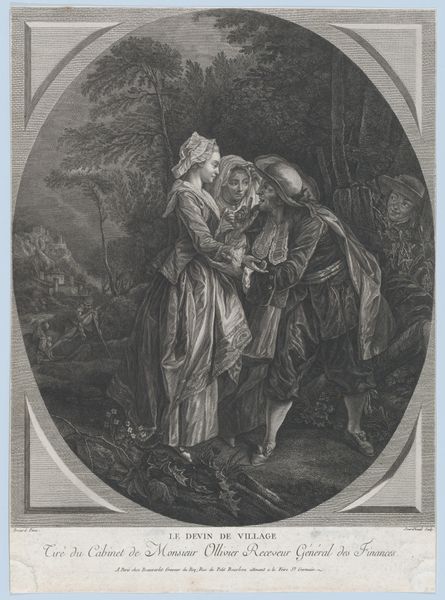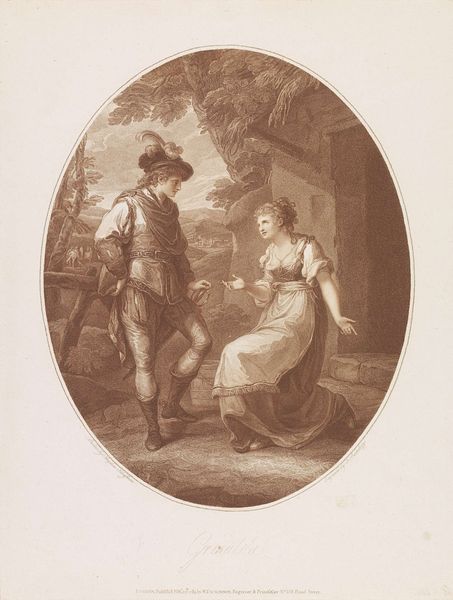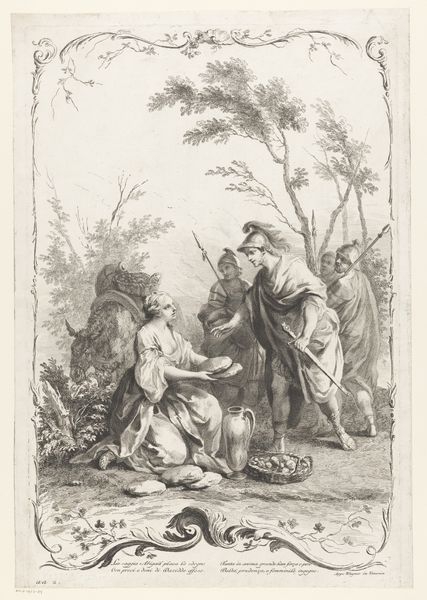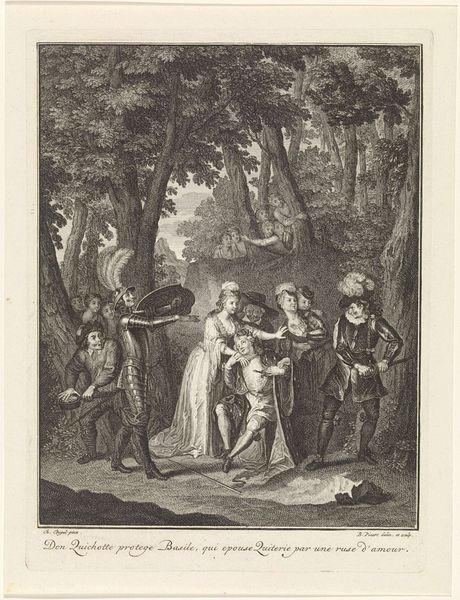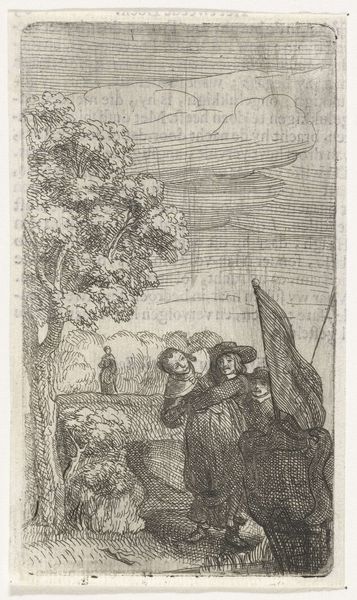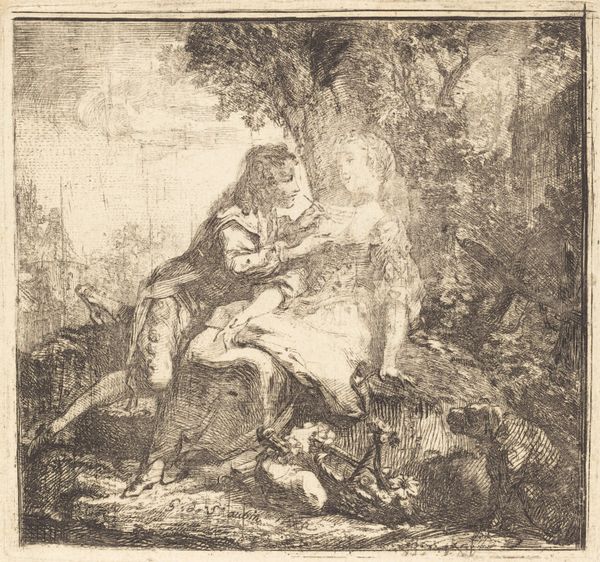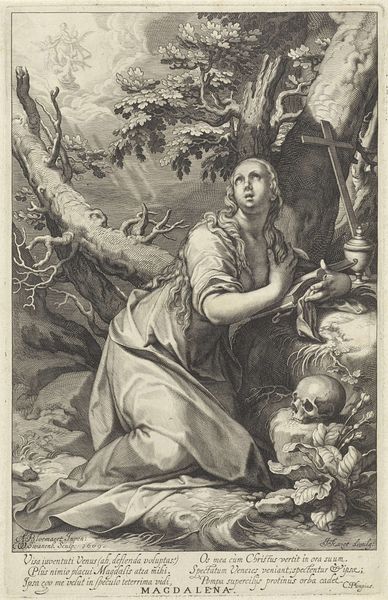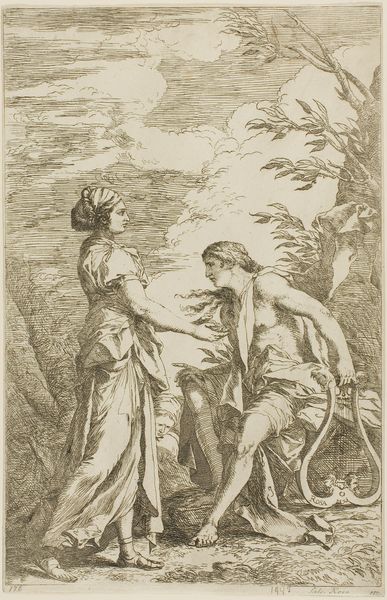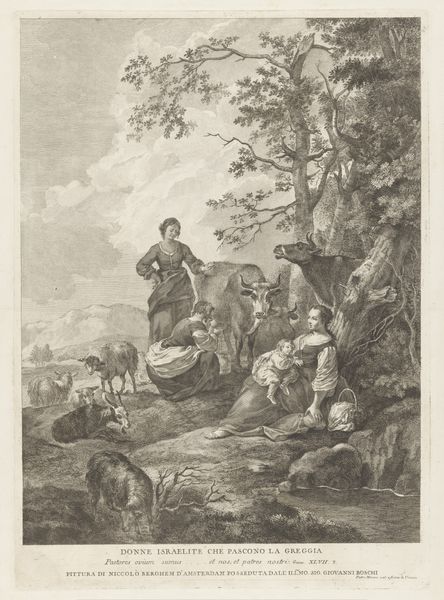
painting, oil-paint
#
narrative-art
#
painting
#
oil-paint
#
figuration
#
romanticism
#
genre-painting
Copyright: Public domain
Editor: So this is "The Female Sutler," painted by Domenico Induno in 1846, using oil paints. It’s… quite bleak, isn't it? There's a young woman seemingly offering something to two soldiers against a rather dismal landscape. What social narratives are at play here? Curator: Indeed. This painting offers a window into the often-overlooked realities of warfare, beyond heroic depictions. Sutlers, like this woman, were essentially travelling merchants who followed armies, selling provisions. This work brings up questions about the economics of war and how it affected civilians, particularly women. Induno subtly acknowledges their critical, albeit often precarious, role in supporting military campaigns. Notice how her offering hand is the brightest element in the whole painting? Editor: Yes, and the soldiers seem ambivalent, their faces almost obscured. What does that signify? Curator: Consider the era. 1846 was a time of political upheaval in Europe, rising nationalism and revolutions. The soldiers’ somber expressions could reflect the grim realities faced by those conscripted or engaged in these conflicts. Induno uses them to challenge romanticized depictions of military life, hinting at the cost to the ordinary citizen and the potential exploitation by the military system. It prompts us to ask who truly benefits from these conflicts and how images like this contribute to shaping public perception. Editor: So, it’s less about glorifying war, and more about exposing its hidden aspects, the informal economy, and civilian struggles? Curator: Precisely. It shifts the focus from the battlefield to the support systems and individual experiences often erased from official narratives. Looking closer, how does the setting – the cloudy skies, almost barren trees, small dog, a temporary tent – reinforce this reading for you? Editor: I see, it emphasizes the harsh and impermanent nature of her livelihood and theirs too. The painting, therefore, acts as a form of social commentary on war’s less visible consequences. Curator: Exactly. Induno used this seemingly simple scene to raise questions about socio-political forces. These genre scenes reflect broader socio-political commentary that circulated widely. Editor: Fascinating. I initially saw a simple transaction, but it is a window into the socio-economic complexities surrounding warfare! Thanks!
Comments
No comments
Be the first to comment and join the conversation on the ultimate creative platform.
